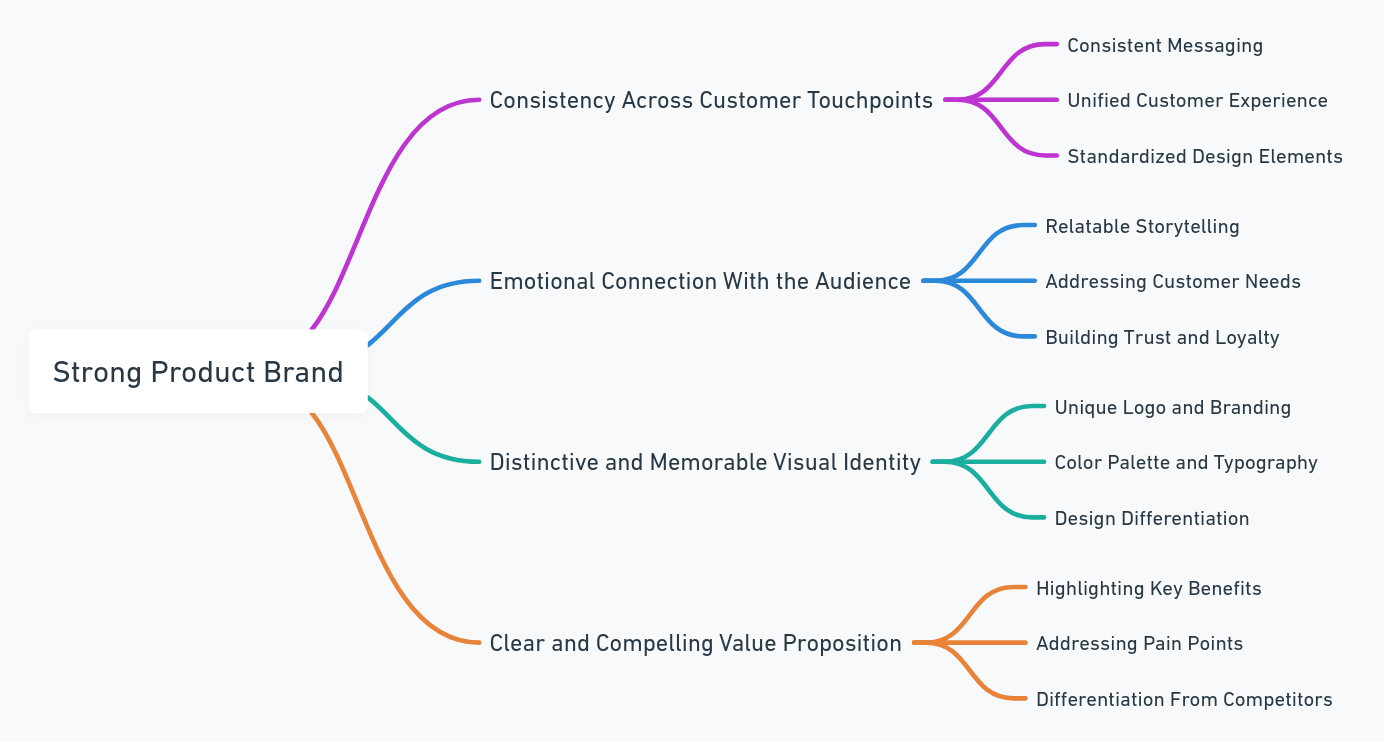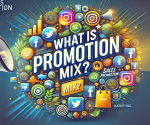Product branding is creating an identity of a particular product that differentiates it from its competitors. Branding defines the visual elements, emotional associations, and functional attributes that allow customers to recognize, trust, and prefer that product over an alternative. When businesses answer the question, What is product branding? They refer to the strategic combination of logos, packaging, messaging, and customer experience to make the product memorable and desirable. A well-branded product attracts customers and leaves an impression, raising its value and market presence.
What is Product Branding?
It creates an identity of one product that can easily be recognized and also emotionally linked with the consumer. Product branding includes a mix of visual elements, like logos, colors, and packaging, together with messaging and product-specific marketing that differentiates it from the rest. For example, the Coca-Cola flagship drink has developed an identity in terms of its unique representation of happiness and togetherness. This is how customers will remember and select Coca-Cola over competitors.
This is what gives a product a competitive edge in the market. Product branding also ensures that the image of the product meets the expectations and needs of its target audience. Consumer knowledge of their preferences, emotions, and behaviors are often factors on which the success of product branding depends.
How does Product Branding Work?
Product branding means deciding on the design elements and the tone of voice so that the promise of the product meets the expectations of a customer. A good product brand invokes trust and loyalty, hence encouraging repeat purchases. This strategic approach builds brand equity, which provides a product with long-term value in the market.
What is the Difference Between a Brand and a Product?
A brand and a product differ in their essence and purpose. A product is a tangible item or service created to fulfill specific customer needs or wants, such as a smartphone or a pair of shoes. It represents what a company offers in the marketplace. A brand, on the other hand, is the perception, emotion, and identity that surrounds a product or a company. It symbolizes the values, reputation, and promise that make the product memorable and meaningful to customers. For example, though a smartphone is a product, Apple is the brand, which symbolizes innovation, quality, and prestige. A brand provides the product with an identity so that customers have faith and loyalty in it; however, a product is a tangible entity providing value.
Corporate Branding vs Product Branding
Corporate branding is the establishment of the reputation of the company, its values, and its culture. This affects all the products and services of the company as a whole and gives it an overall identity. Product branding gives each product its own personality and targets a particular market.
| Aspect | Corporate Branding | Product Branding |
| Scope | Encompasses the entire organization, representing its vision, mission, and values. | Focuses on creating a unique identity for individual products within the organization. |
| Purpose | Builds the overall reputation and trust of the company, ensuring that all its products benefit from its image. | Establishes distinct identities for products, making them memorable and appealing to target customers. |
| Target Audience | Targets a broad audience, including customers, investors, employees, and stakeholders. | Focuses specifically on the users and buyers of the product, tailoring the branding to their preferences. |
| Messaging | Highlights the company’s ethos, credibility, and innovation to foster trust across all products and services. | Emphasizes the product’s features, benefits, and unique selling points to stand out in the market. |
| Example | Apple portrays itself as an innovative, premium-quality tech giant trusted worldwide. | The iPhone emphasizes cutting-edge technology, sleek design, and user-friendly experiences. |
| Longevity | Maintains a long-term identity, defining the company’s essence across decades and changing trends. | Evolves with market demands and customer preferences to keep the product relevant and competitive. |
| Marketing Approach | Takes a holistic approach by using campaigns that promote the brand across industries and markets. | Employs targeted campaigns that focus on the product’s specific value proposition and niche audience. |
| Emotional Connection | Develops trust and loyalty for the organization as a whole, fostering a sense of reliability. | Builds emotional resonance by addressing specific needs or aspirations related to the product. |
| Visual Identity | Uses a consistent logo, tagline, and theme for the entire organization. | Creates tailored visual elements like packaging, product-specific logos, and exclusive color palettes. |
| Impact on Business | Strengthens the brand equity of all products under the corporate umbrella. | Enhances the product’s marketability, often allowing premium pricing and niche positioning. |
Is Product Branding Worth the Investment?
Investing in product branding creates immense value for businesses by enhancing product recognition, building customer loyalty, and driving revenue growth. It ensures that a product stands out in competitive markets and connects emotionally with its audience. Let’s explore why product branding is a critical investment for long-term success.
Financial Returns
Product branding increases the perceived value of a product. Consumers are willing to pay more for branded products on which they rely. For example, a bottled water brand in an established manner usually costs much more than its nonbranded counterpart because it communicates a lot about the emotional value and quality associated with the product.
Customer Loyalty and Retention
The investment in the branding of a product gives confidence, and then the customer keeps coming back for repeat purchases. Consistent branding reassures the customer and also ensures that the customer knows what to expect. Over time, this familiarity will become loyalty to the business as it benefits the business through customer lifetime value.
Market Differentiation
Product branding distinguishes products in a competitive market. For instance, Nike makes their shoes unique because they portray them as be means of empowerment and high performance. Branding makes a product a way of life; therefore, business will have an upper hand.
Long-term market value
A well-branded product remains current with changing trends. This reduces the chances of repeated rebranding and keeps the customers constantly interested. For example, Levi’s jeans are a favorite because of the strong product branding that emphasizes quality and heritage.
More Marketing Activities
Product branding simplifies marketing by giving a clear message and identity. Marketers can create campaigns that are aligned with the product’s branding, ensuring consistent communication across channels. This consistency strengthens brand recognition and recall, maximizing marketing impact.
What Makes a Strong Product Brand?
A strong product brand creates a lasting impression by delivering consistency, value, and emotional resonance. It builds trust, ensures customer loyalty, and stands out in competitive markets. Let’s explore the essential traits that make a product brand impactful and memorable.

Consistency Across Touchpoints
A powerful product brand delivers the same experience consistent experience through ads and packaging right through to service to the customers. This makes them trustable hence promoting brand identification. For example, McDonald’s ensures uniform branding by all its global outlets and is recognized instantly everywhere.
Emotional Appeal
Product brands create feelings that are synonymous with the customer. A product that emotionally evokes becomes more than a purchase and becomes part of the identity of the customer. Brands like Dove use emotional appeal by promoting self-esteem and inclusiveness.
Visual Identity
Logos, colors, and packing designs are responsible for giving individuality to any product in people’s eyes. Visuals have the potential to attract and remain in customers’ minds. For instance, the bright orange Cheetos bag promises automatic recognition at snacking aisles.
Clear Value Proposition
A good product brand communicates value. One must be able to see the face value of what the product is offering and why it would be better in comparison to some other option. These are value propositions that Tesla implements: innovation, sustainability, and performance.
Customer-Centric Messaging
They will look for what the customer needs and what they want from the brand. Messages will be developed over their particular pain or want, and then they will place meaning to that message. For example, Lush got loyal followers for its environmental and ethical practices due to customer satisfaction.
Examples of Successful Product Branding
Successful product branding captures customer attention and fosters loyalty by creating unique and memorable identities. Let’s examine iconic examples that highlight effective branding.
Coca-Cola: The Iconic Beverage
A great example is Coca-Cola- a beverage company whose product brand is acknowledged everywhere. Some aspects that highlight the branding of the product brand with consistent messages and visual identity of this beverage brand are happiness, shared moments, and nostalgia. “Share a Coke” campaigns have brought in personalization and have drawn upon its emotional appeal.
Nike: Just Do It
The Nike product branding is about power and performance. It has a slogan “Just Do It,” which encourages the customers to run after their dreams and make the products inspirational. Therefore, it connects with excellence through high-profile endorsements.
Apple iPhone
It shall brand the product while marketing it as an innovative and luxurious phone. That means style, an easy interface to work with, and technology make it a product. By branding the iPhone, it provides its customers the opportunity to tag it with terms that have the description of quality and prestige.
Starbucks Coffee
The core is personalization of service, along with premium quality. Its green logo and cozy atmosphere make each experience identical, thus inciting loyalty. It also adds strength to the value of the brand through ethical sourcing.
Toyota Prius
The Toyota Prius product is branded under the value proposition of environmental sustainability and fuel efficiency. Branding the Prius as an environmentally friendly option allows Toyota to market the car to environmentally conscious customers and hence attain a strong position in the market.
Product Branding FAQs
What is the difference between a brand and a product?
A product is an intangible product or service; a brand, on the other hand, is the perception, identity, and emotional bond that the customer has towards it. Branding gives a product an identity.
Why is product branding important?
Product branding is required to create recognition, trust, and loyalty. Product branding offers the difference to the products in the competitive markets. It creates long-run value because it provides repeated opportunities for purchase towards a business.
How does product branding contribute to businesses?
Product branding helps increase customer loyalty as well as market positioning plus premium pricing and also develops an emotional relationship with the target audience.
Can small businesses invest in product branding?
Yes, a small business can make effective product branding without large investments by applying creative strategies like storytelling and digital marketing.
What are the success criteria for a product brand?
Success in a product brand boils down to being consistent, looking great, emotionally engaging, and relevant enough to customers. Effective messaging means long-term success through a great story.


